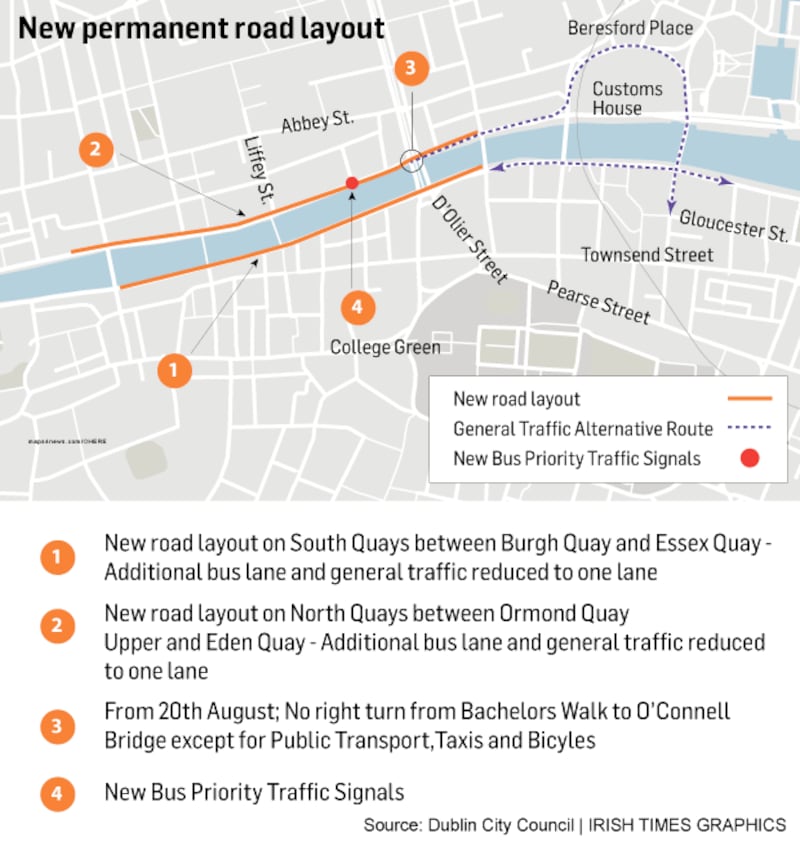Motorists using the Liffey quays in Dublin faced major changes to their morning commute on Monday following the introduction of permanent traffic restrictions over the weekend.
Since Sunday, cars have been banned from turning right from Bachelors Walk on to O’Connell Bridge, and general traffic has reduced to one lane from Ormond Quay to Eden Quay on the north side and from Burgh Quay to Essex Quay on the south side, to create additional bus lanes.

The ban on cars turning right from the north quays on to O’Connell Bridge has been introduced to minimise the potential conflicts between cars and the new Cross City Luas trams which will travel north across the Liffey on to O’Connell Street from December.
Long delays
While traffic volumes are at their lowest during August, many motorists reported long delays on the quays during the morning peak, with several commenting on a lack of Garda presence along the route and particularly at O’Connell Bridge.
“Well it has taken about an hour to come up from Heuston Station. Last Monday I probably did it in about 15 minutes,” said Laura McManus, who was driving on the north quays between 8am and 9am.
Jim Kavanagh, a Dublin Bus driver, said despite the priority lanes afforded to buses, his journey to the city centre had taken longer than normal.
“The problem here today is with the bus lanes being changed and everything being redirected – there is not one single copper on duty today, nobody knows where to go.”
A Garda spokesman said traffic management was not a matter for An Garda Síochána. “These traffic management measures speak for themselves. The regulation and management of traffic is not a Garda matter, it’s a matter for the local authority.”
Warnings ‘in place’
Electronic signage warning of the changes were in place "all over the city" a spokeswoman for Dublin City Council said.
“We had discussions with An Garda Síochána in connection to the implementation of this measure, regarding enforcement and Garda attendance at site if required,” she said.
A spokeswoman for Dublin Bus said it had received “positive feedback” from drivers and customers about improvements to journey times. “Dublin City Council reported to us that between 8am and 9am, recorded customer journey times on our services were reduced by over 40 per cent,” she said.
“We are monitoring journey times on all services operating along the quays and we are confident that these measures will continue to benefit our customers and tackle congestion in the city centre.”
The council had in 2015 planned to ban cars from the north quays from the junction of Jervis Street, but last year watered this down to allow cars to continue on to Bachelors Walk, where they would have to turn left on to O’Connell Street and would be prevented from driving straight ahead on to Eden Quay, or turning right on to O’Connell Bridge.
This would have eliminated the possibility of cars coming into contact with trams or blocking the Luas tracks. However, the council scrapped the plan earlier this year following pressure from some city businesses.
As a result, motorists will be able to access Eden Quay, but with only one traffic lane open to them, and will be able to turn left on to O’Connell Street. The right-hand turn on to the bridge will be reserved for buses, taxis and bicycles, and cars will be held back by new traffic signals on Bachelors Walk to allow buses to move into the right lane to take the turn.









